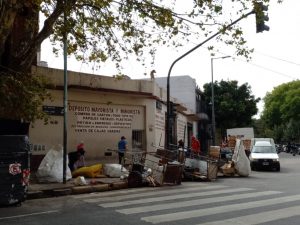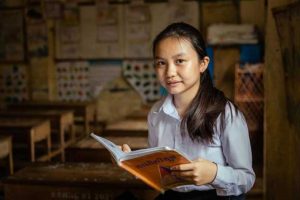
Egypt plans to sell shares in 32 state-owned businesses, including three banks. Credit: Hisham Allam/IPS
By Hisham Allam
Cairo, Apr 6 2023 – Egypt intends to sell shares in 32 state-owned businesses within a year, including three banks, two military-owned businesses, and numerous businesses in the energy and transportation sectors. This is part of the administration’s efforts to reduce the role of the state in the economy and attract foreign capital.
That also follows the government’s December USD 3 billion deal with the IMF to resume privatization initiatives.
The IMF approved the USD 3 billion loan to strengthen the private sector and reduce the state’s footprint in the economy.
Egypt planned to sell 23 state-owned enterprises in 2018, but the plan was postponed due to the worldwide crisis.
The Russia-Ukraine conflict has put pressure on the Egyptian economy and currency, making the proposal more urgent.
According to Rashad Abdo, head of the Egyptian Forum for Economic Studies, Egypt had already received sovereign loans from many donors, including international institutions, such as the International Monetary Fund and Gulf countries, and these parties either set harsh lending conditions or would be reluctant to lend due to increased risks.
The State Ownership Policy Plan, adopted by President Abdel-Fattah El-Sisi in December, outlines how the government would participate in the economy and how it would increase private sector involvement in public investments. Egypt wants to increase the contribution of the private sector to the nation’s economic activity from 30 percent to 65 percent within the next three years. One-quarter of these enterprises will be listed by the government within six months.
Egypt announced the offering of these companies, intending to sell them to strategic investors, specifically Gulf sovereign funds. Egypt is expected to sell enterprises worth USD 40 billion within three years, including those held by the army.
Attracting foreign investment requires strengthening the investment climate, lowering inflation rates, and expanding anti-corruption efforts, Abdo told IPS.
The State Ownership document states that 32 Egyptian state companies will be listed on the Egypt Exchange (EGX) or sold to strategic investors within a year, beginning with the current quarter and ending in the first quarter of 2024. Stakes in three significant banks, Banco du Caire, United Bank of Egypt, and Arab African International Bank, are among the scheduled transactions. Insurance, electricity, and energy companies, as well as hotels and industrial and agricultural concerns, will also be on the market. Prime Minister Moustafa Madbouly announced that the first stakes would be offered in March and a quarter by June, and more businesses could be added over the next year.
Abdo pointed out that the Monetary Fund affirmed the Egyptian government’s commitment to implementing the State Ownership Document when it agreed to grant it this loan and the Egyptian government saw it as a favorable opportunity to implement the terms of the document set by the Organization for Economic Cooperation and Development.
Mohamed Al-Kilani, professor of economics and member of the Egyptian Society for Political Economy, said the privatization effort seeks to eliminate the dollar gap in Egypt and thus provide indirect compensation in the form of services and benefits from the International Monetary Fund’s debt.
The state would also send a message to foreign investors that it responds to the private sector and is willing to withdraw from certain sectors to benefit the private sector.
“The state is attempting to exploit this proposal to stimulate and revitalize the Egyptian Stock Exchange while taking into account the fair valuation of these companies in comparison to the global market. However, the state was unclear about the details of this offering and whether it is a long-term or short-term investment, and it has not clarified the size of employment or the percentages offered in terms of ownership and management,” Al-Kilani told IPS.
“The state is trying to create new types of foreign investment to attract foreign currency due to the fluctuation in exchange rates and high-interest rates,” Al-Kilani added.
According to external debt data published on the central bank’s website in mid-February, Egypt’s external debt fell by USD 728 million to USD 154.9 billion at the end of last September, but its foreign exchange reserves remain low, prompting renewed demand for state assets. The Russia-Ukraine conflict has further pressured the economy and local currency, prompting the proposal for new urgency.
Despite its relatively modest improvement in the latest data from the central bank at the beginning of February (USD 34.2 billion), it lost about 20 percent of the level of USD 41 billion at the end of February last year.
Last January, the IMF suggested that the volume of the financing gap in Egypt would reach about USD 17 billion over the next 46 months in light of its decline in foreign exchange resources and the high cost of its imports as one of the largest countries in the world to import its food and the first importer of wheat in the world.
IPS UN Bureau Report





